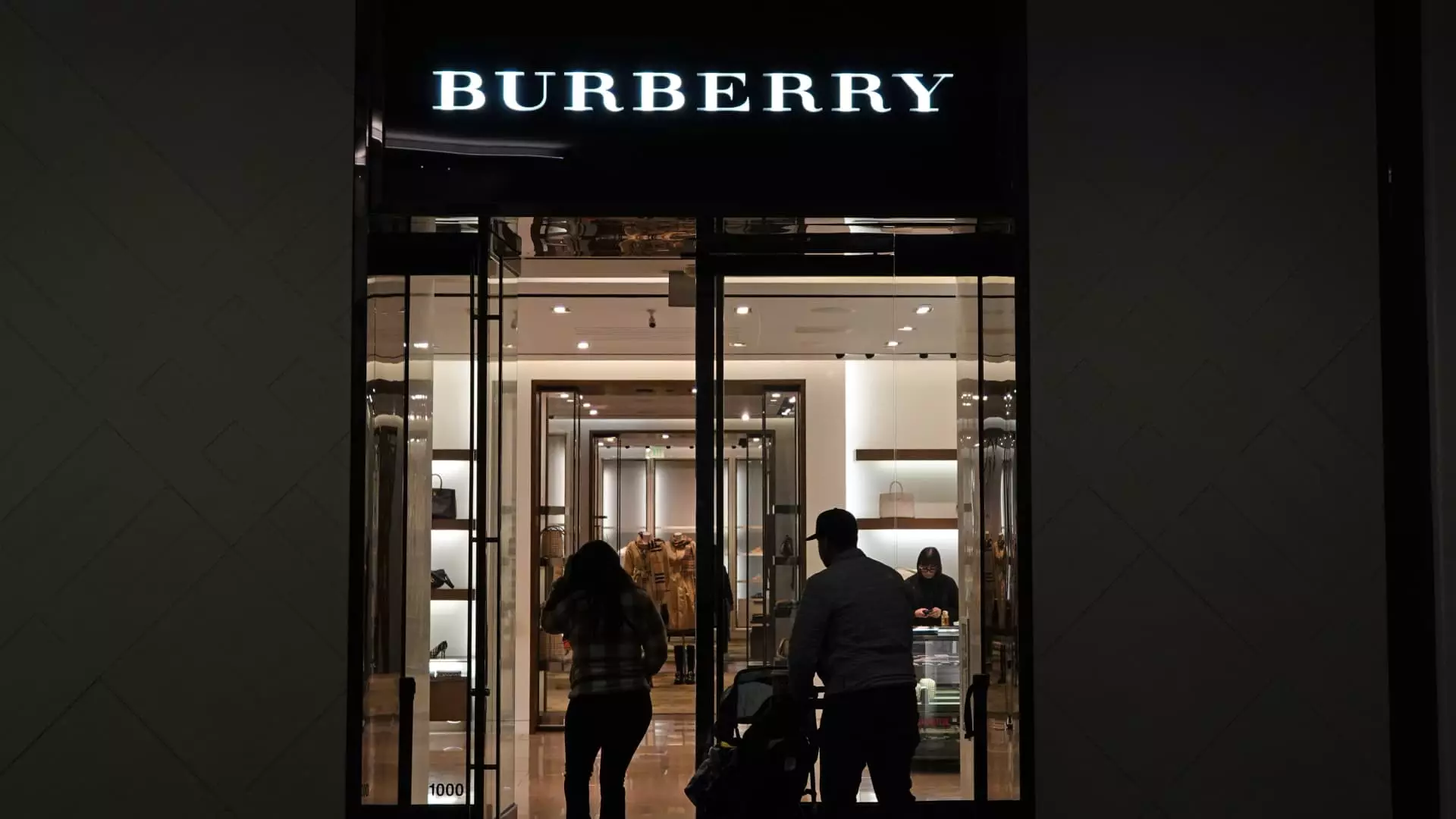In a notable turn of events, Burberry Group plc has witnessed a significant uptick in its stock prices, soaring by as much as 16% following the release of its fiscal third-quarter sales report. This surge comes amid ongoing efforts to rehabilitate the British luxury fashion brand, which has faced challenges in recent years. The latest sales figures indicate a lesser decline than analysts had initially forecasted, suggesting that CEO Joshua Schulman’s strategies might be beginning to bear fruit, albeit with noted caveats.
Burberry reported a 4% year-on-year decline in comparable sales for the three months leading up to December, a much softer decrease than the anticipated 12%. By mid-morning in London, stock prices had settled around a 12.9% increase, resonating positively across other luxury retailers, which also benefited from this uplifting news. Total revenue during the bustling holiday season hit £659 million (approximately $816 million), reflecting a 7% year-on-year decline, but showcasing signs of resilience amidst broader challenges.
Although sales in the Asia Pacific region and the European, Middle East, India, and Africa (EMEIA) decreased by 9% and 2%, respectively, there was a notable 4% sales growth in the Americas. This regional performance indicates a broader revival of luxury consumer spending in the U.S., offering a glimmer of hope in an otherwise challenging landscape for Burberry.
Strategic Transformation Underway
In light of the more optimistic results, Joshua Schulman expressed cautious optimism regarding customer reception to Burberry’s latest marketing campaigns. He emphasized that though progress has been made, the company remains in the early phases of a transformative journey. The current initiatives, branded as ‘Burberry Forward,’ are aimed at revitalizing brand appeal and performance while focusing on sustainable growth.
The challenges have been significant, with Schulman noting, “There remains much to do.” His leadership represents a departure from a turbulent period for Burberry, characterized by fluctuating sales and frequent management changes. Schulman’s strategy aims to restore the brand to its “original purpose,” referencing the distinctive heritage that Burberry is renowned for, which has often been overshadowed by a veneer of modernity.
Chief Financial Officer Kate Ferry, while optimistic about returning to previous success levels, acknowledged the uncertain timeline of this overhaul. She stated, “It’s early days,” signaling a need for patience as the company strives to reclaim its former glory. Current macroeconomic factors, such as improved consumer sentiment and potential increases in U.S. consumption, have created an encouraging backdrop, although Ferrier has refrained from incorporating these into the company’s forecasts.
This conservative approach reflects a commitment to cautious optimism: recognizing the opportunities presented by a stronger U.S. dollar and a shift in consumer behaviors without prematurely banking on these factors. The luxury market as a whole has begun to see glimmers of recovery, which could bode well for Burberry’s strategic endeavors.
Market analysts have taken a relatively positive stance on Burberry’s recent performance, viewing the uptick in sales as a promising first step towards recovery. RBC analysts identified several operational “easy fixes,” including streamlined store layouts and a renewed focus on core product categories. These changes are seen as integral to enhancing customer engagement and driving sales.
Further bolstering this optimism, widespread expectations for a general recovery in luxury sales were evidenced by the recent success of companies like Richemont, which reported record quarterly sales figures. Such positive industry trends contribute to heightened hopes for Burberry’s resurgence, even as analysts remain mindful of the long road to sustained recovery.
While the latest sales figures and strategic initiatives offer renewed hope for Burberry, the company’s journey toward a lasting recovery is still in its infancy. Schulman and his team are evidently moving in the right direction, yet significant challenges remain. With a focus on authenticity and a return to the brand’s luxury roots, the path ahead is promising yet fraught with uncertainty. Ultimately, Burberry’s future will depend on its ability to maintain momentum and effectively engage consumers in an increasingly competitive luxury marketplace.

